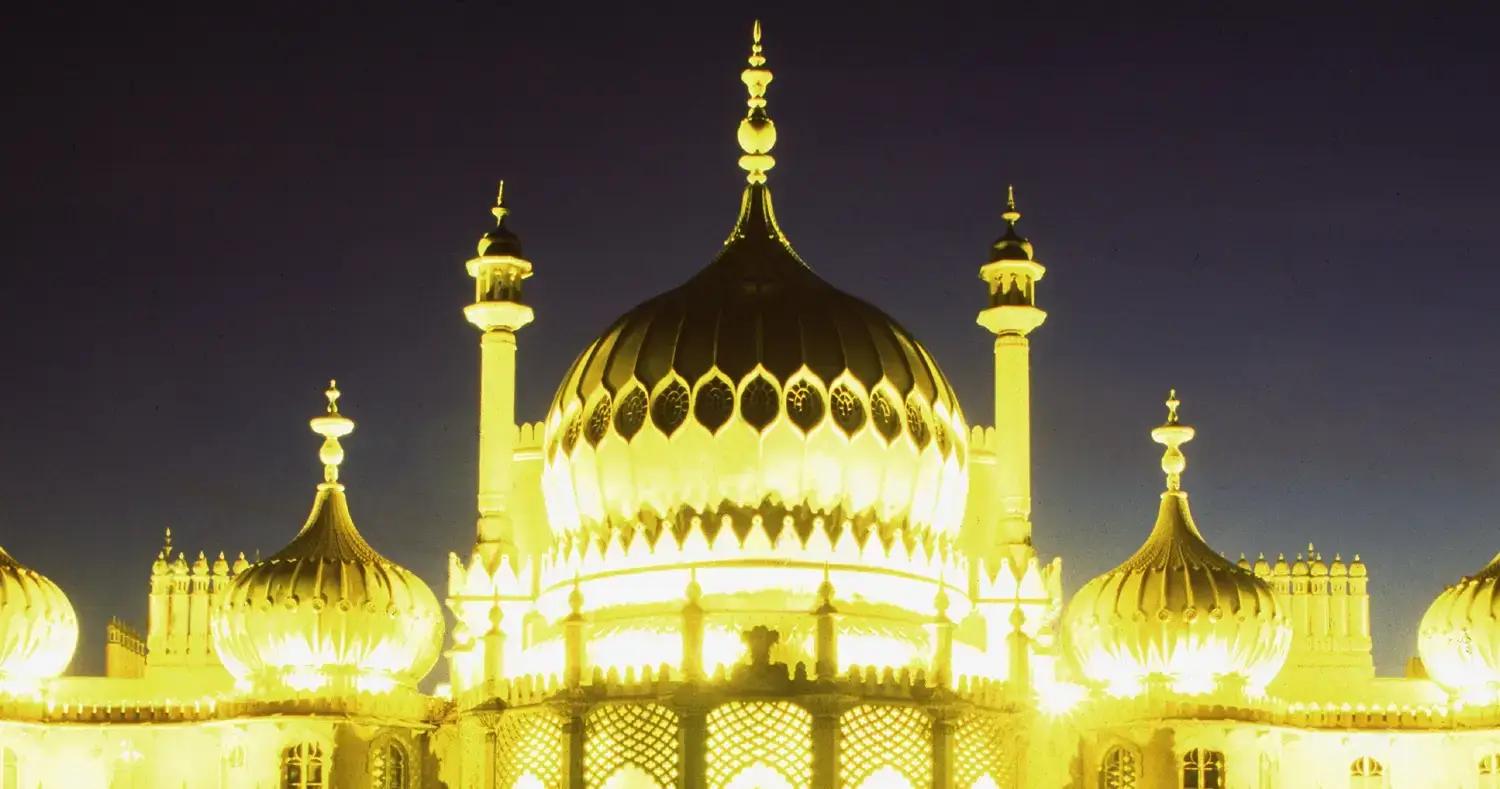


George IV’s initial visit to Brighton was in 1783, where he was visiting his uncle, Prince Henry, Duke of Cumberland. Brighton had become popular and fashionable as a result of George’s uncle’s presence in the town. Henry’s taste for gambling, cuisine, the theatre and a general fast pace of living brought him and the young prince close.
The two of them lodged together in Grove House for some time. George was advised by his doctor that the fresh sea air would help with his gout. The prince grew to love Brighton and eventually, in 1786, rented a modest farmhouse facing the Old Stein which at the time was a grassy area of Brighton which was popular with visitors.
The prince liked the location so much that he commissioned the pavilion to be built the following year in 1787, to be built by Henry Holland. His fascination with Indian architecture like the Taj Mahal were inspiration for the external design of the palace while inspiration taken from Chinese design was influential in the design of the interior.
With high ceilings and artistic wallpaper, the pavilion became an iconic part of Brighton and home to the soon to be prince regent. The furnishings were done in Holland’s French-influenced neoclassical style.
By combining these different styles and fashions the pavilion was made a cultural masterpiece, taking influence from all around the world. The stables were later added in 1808 and were designed in the same Indian style as the Pavilion.
Designer John Nash redesigned and extended the pavilion between 1815 and 1822. He designed the pavilion that we see in Brighton today and is responsible for the final design of the palace.
The pavilion is actually a prime example of Regency style and is partly responsible for bringing cultural influence in architecture into the mainstream of fashion in the late 18th century and early 19th century.
The pavilion’s great Kitchen was completed in 1818 as part of John Nash’s reconstruction of the Royal Pavilion. The kitchen was designed to be truly innovative and modern for its day. Its facilities offered the very latest steam heating technology. A constant supply of water pumped from a nearby well into the Royal Pavilion’s own water tower with an even more impressive ventilation and illumination system of twelve high windows.
The Great Kitchen was not spared its own ‘taste of the Orient’. It had four large cast-iron columns, ornamented with painted copper palm leaves to support the ceiling.
A kitchen so close to the banqueting room was quite unusual for the day. It gave George IV the opportunity to show off to guests and he very often escorted his guests around the Great Kitchen as part of his tour of the state apartments. It was one of the very first ‘show’ kitchens.
The great kitchen and the banqueting Room were separated by the Table Deckers’ Room. Here, the royal table deckers prepared highly elaborate designs for the great table in the Banqueting Room.
The great French chef Antonin Carême worked there. George IV had always admired French arts and culture – both in a visual way and a culinary way. He was totally obsessed with food and dining – as such we naturally wanted to employ the very best French chefs too. It was decided then that he needed a chef who would appreciate and work well within his modern Great Kitchen. He also needed someone capable of producing the extravagant and ostentatious banquets that were so fashionable at the time. George simply loved hosting.
In 1816 he employed renowned French chef Marie Antonin Carême to work for him. Firstly, at his London home, Carlton House and then at the Royal Pavilion in Brighton. Carême went on to create truly magnificent culinary works of art that amused George’s guests and stimulated great conversation. Particularly impressive were his overly elaborate confectionery pieces that sometimes stood over four feet high and up to two feet across. In 1817 Carême created eight great confectionery centrepieces for the banquet held in the Pavilion to honour the Grand Duke Nicholas of Russia. The menu included 36 main dishes and 32 side dishes – enough to satisfy all guests we’d say at Supaphoto! Unfortunately, Carême could not be finally persuaded to stay long in George’s employment and he returned to France in 1817.
Want to find out more? You can visit all of this and more at the Brighton Pavilion, Brighton, East Sussex.